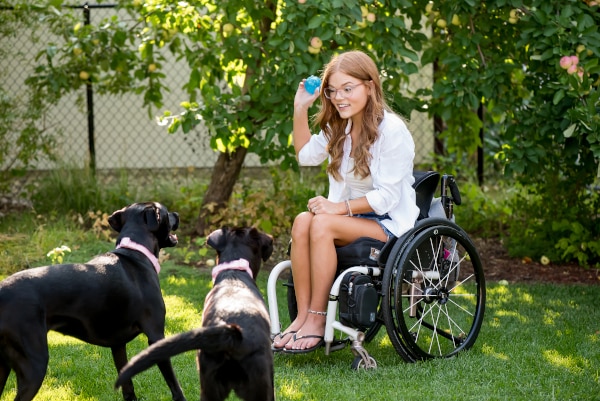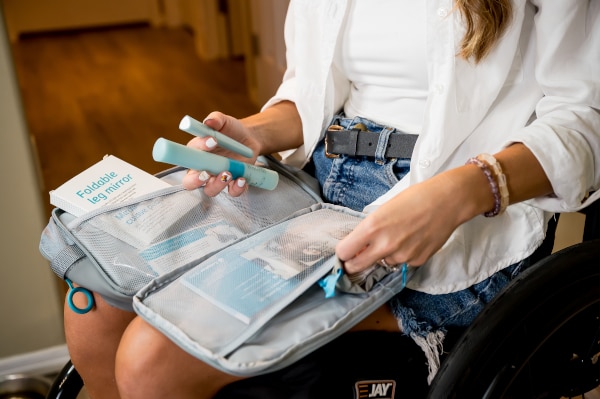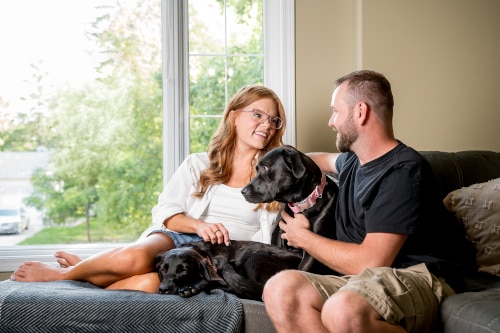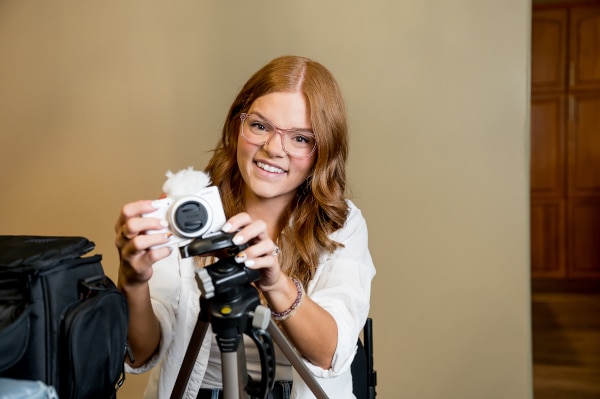My story is a bit unique - I was a new nurse at the start of my career when the accident happened. I had finally moved home from nursing school in Alberta, my then-boyfriend-now-fiancé Ryan and I had just moved into our first home, and I had gotten my first full time job as a nurse in rural Manitoba. My life finally felt like it was starting, all my hard work felt like it had paid off, and everything was falling into place… until a four-second choice from a stranger changed my life forever.

I was on my way home from a nightshift. The sky was clear, the weather was beautiful, and I was excited to get home to rest and enjoy the beautiful weather with Ryan later in the day. However, I never made it home. A large pick-up truck thought they could beat four lanes of highway traffic, speeding across, failing to yield to oncoming traffic.
He came into my lane so fast I didn’t even have time to react.
That's really where my journey with catheter use starts. I was air-transported to our local trauma center where they quickly began working on me. I was too unstable for surgery, so they placed me in a halo device that was screwed into my skull in four places, attached to an external vest, which stayed permanently in place over the next four-and-a-half months while my broken neck healed. The next few weeks went on and I spent my time in the hospital embarking on my toughest journey yet - recovery.

A few weeks later when it was finally time to take my internal catheter out, I was excited.
I realized when they took it out, I didn’t have much sensation - but I was on a lot of medication, so I never thought much of it.
My body did not have the neurologic capacity to tell me when it was time to go to the bathroom, meaning that I was incontinent a lot, but no one seemed to mind so I was left thinking this was a normal part of the spinal shock process.
This went on for the year following my accident. I wore products like a brief or pad without catheterizing because I was never taught how to or even told that it was something I needed to do. My recovery got wildly delayed due to COVID-19, even receiving negligent care at times, so many of my symptoms were overlooked no matter how many times we brought up our concerns.
It was a year and a half later that I finally met my spinal cord injury doctor. She said, “Oh, you have neurogenic bladder. It’s common with SCI patients.” Up until this point, no one had talked to me about having a spinal cord injury - just neurologic impairment from the swelling on my spinal cord. Devastatingly, I went for the tests and confirmed that yes, I did have neurogenic bladder and bowel, and that I should be straight cathing at least once or twice a day to help my body fully empty.
The thought of having to do all of this myself with limited hand dexterity as a result of my injury was really overwhelming.

However, the fact that I still had the ability to do it myself felt like a blessing, because I never wanted my caregiver, fiancé, or someone else to have to do it for me.
That day in the clinic, I was given all my catheterization supplies and sent home with little education how to self-catheterize. Because I was a nurse, I think it was just assumed my knowledge would suffice, without anyone realizing self-catheterization is much different and more difficult both mentally and physically to do on oneself, especially if they have limited use of their body! I remember struggling so much my first time - the mental hurdle of it all was just as hard if not worse than the actual act of catheterizing.
I just sat there for hours looking at the supplies realizing what my life looked like and began sobbing.

There just weren’t a lot of resources or support where I live so I felt like I was doing this alone. I then realized that many patients in my short career have had to endure similar experiences to mine, and that’s when my perspective changed. I have always shown empathy for my patients and reassured them that what they were experiencing was nothing to be embarrassed or ashamed of. I realized that as a care provider, I could recognize this so easily for my patients but not myself, and that’s when I knew the conversations around these topics needed to change.
For two years I documented my recovery journey online, now with almost half-a-million followers on social media. I wanted to show firsthand what surviving looks like. I started using my platform to bring awareness, advocacy, and education to these tough subjects. When I opened up about my journey fully, the response was enormous, and I realized this was nothing to be embarrassed of.

So many others live a similar life to mine, and the support was endless. It brought a sense of healing to this part of my journey.
SpeediCath® catheters from Coloplast have helped make the transition to my new reality go so much smoother! The Triple Action Coating Technology™ that is used on the entire range means that every catheter is ready-to-use out of the packaging without any other lubrication. SpeediCath® catheters have hydrophilic-coating and polished eyelets that allow for a safe, easy, and convenient catheterization with minimal preparation, so I can spend my time doing the things that make me happy.
You can become disabled at any point in your life.
Education and awareness around disability matters, as the more representation there is, the more these “taboo” subjects are discussed and the stigma surrounding them lessened.
While I have not yet been able to return to work as a bedside care nurse, I am hopeful to continue educating, having open conversations, bringing awareness, and helping lessen the burden for someone else’s journey.
Thank you for listening to my story!
Sincerely,
Bri
